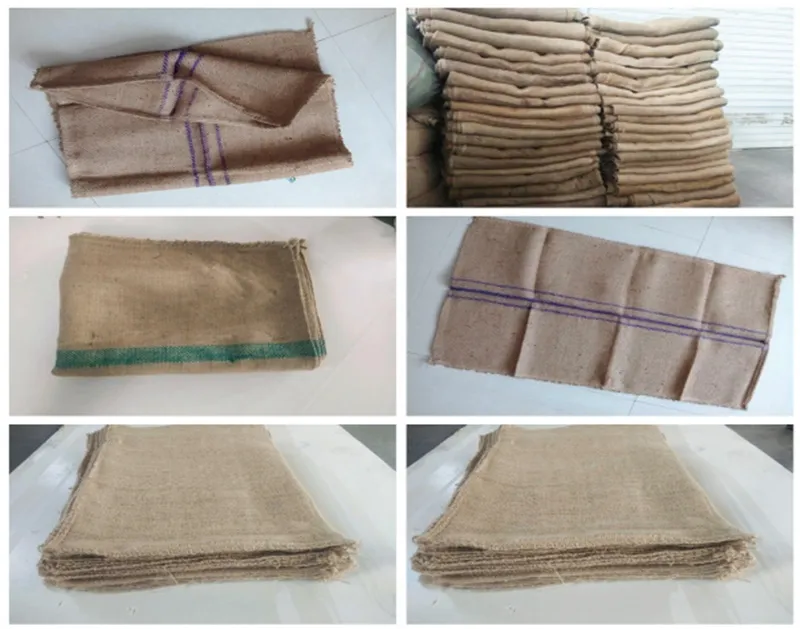Jute Bags: Green Guardians on the Road of Environmental Protection
As a green guardian on the road of environmental protection, ʻeke jutes play an important role in modern environmental practices due to their natural and biodegradable characteristics. jute is a plant with a short growth cycle and sustainable resources. Its production process has minimal impact on the environment, and the bags made from it have high durability and strength, making it suitable for various purposes such as packaging and transportation.

Using Jute Bags to Combat White Pollution
White pollution is one of the severe challenges facing the environment today, and plastic bags are the main "culprits" of white pollution. These difficult to degrade plastic products pile up recklessly in the natural environment, drifting with the wind, hanging on branches and floating on water surfaces, becoming glaring "scars". The emergence of ʻeke jutes provides a powerful solution to the problem of white pollution. Replacing plastic bags with huahana jute can significantly reduce the generation of white pollution and restore the cleanliness and beauty of our mountains, rivers, cities, and rural areas.
Using Jute Bags to Practice Resource Sustainability
Jute, as a renewable resource, has a short growth cycle and can usually be harvested within a few months. Unlike plastic bags that rely on non renewable resources such as oil, the production of jute does not rely on limited fossil fuels, which fully aligns with the concept of sustainable development. When we choose to use ʻeke jute, we are not only contributing to current environmental actions, but also laying the foundation for a better life for future generations and ensuring the sustainable use of Earth's resources.
Using Jute Bags to Promote Low-Carbon Living
The production process of traditional plastic bags is accompanied by a large amount of energy consumption, while emitting a large amount of greenhouse gases, exacerbating the process of global climate change. On the other hand, the cultivation and processing of jute have relatively low energy consumption and minimal carbon emissions. Every time we choose ʻeke jutes, we are contributing to the fight against climate change, helping to slow down the pace of global warming and protect our common home on Earth.
Jute Bags: Environmental Pioneers of Future Life
Looking ahead to the future, the development prospects of huahana jute are bright. With the continuous advancement of technology, the processing technology of jute will continue to innovate, and the quality and performance of ʻeke jutes are expected to be further improved. At the same time, the increasing public awareness of environmental protection will continue to drive the growth of market demand for environmentally friendly products, injecting strong impetus into the development of ʻeke jutes.
In the future, ʻeke jutes will not only continue to shine and generate heat in the traditional packaging field, but also explore new application spaces in fashion, home and other fields. Fashion designers can cleverly integrate ʻeke jutes with fashion elements to create unique items that are both environmentally friendly and fashionable; In the field of home decoration, ʻeke jutes can be used as unique decorations to add a natural and rustic charm to the home environment, integrating environmental protection concepts into every corner of daily life.
Jute bags, as outstanding representatives of green and environmentally friendly products, have enormous development potential. It is not only an effective means to solve the current environmental pollution problem, but also a powerful assistant to create a more convenient and better life for us. Let us join hands to pay attention to and support the development of ʻeke jutes, and contribute to the construction of a green and environmentally friendly beautiful home.
Kaʻana like
-
Lithium Battery Welding Machine | High-Precision, Fast, SafeNūhouNov.17,2025
-
Aluminium Guide Roller | Anodized, Lightweight, Low-NoiseNūhouNov.17,2025
-
Tofu Cat Litter Bulk – Eco, Low-Dust, Fast Clumping SupplyNūhouNov.17,2025
-
Equipment for Lithium Cell Assembly | Automated & PreciseNūhouNov.10,2025
-
Square File Tool – Precision Cut, Hardened Steel, VersatileNūhouNov.10,2025
-
Lithium Ion Battery Assembly Machine | Automated, High-SpeedNūhouNov.10,2025







